If there is one vegetable that is a staple of Mexican cuisine, it would be the Chili Pepper. Is unbelievable the range of Mexican peppers you can use, and the best part is that once you start using them, you will want to experiment with them more and more in other recipes.
So today, we are taking the mystery out of cooking Mexican peppers with our 12 essential Mexican peppers for spicy traditional dishes.

Essential Mexican Peppers
Chili peppers are a key component of many international cuisines. While many varieties of chili peppers, both fresh and dried, are utilized in Mexican cuisine. The people which tried Mexican cuisine agreed that it is one of the most flavorful foods in the world, Chili peppers provide both heat and flavor, but the greatest Mexican dishes balance the two flavors rather than focusing on Scoville heat, even if many pepper varieties provide a wonderful amount of heat for those who enjoy spicy food.
The most popular chili peppers in Mexican cuisine are listed here. The list isn’t complete. Many fresh peppers have lots of names when they are dried. This is due to the completely distinct flavor that dried peppers offer in contrast to fresh peppers. These peppers have different names and are often dried and smoked to provide additional taste. For instance, the term “chipotle” refers to a smoked jalapeno pepper. Mexico is a diverse country, and even while these are the most common, some regions prefer some chili peppers over others.
12 Mexican Peppers You Have to Learn About
We have tried to include as much information below to give you a piece of good basic knowledge but do not be afraid to experiment and substitute where ever you like. Most of the fresh chili peppers in this list can easily be found at most grocery stores. The dried varieties may be more difficult to locate depending on your locale, but they store well, so once you find them, you can purchase a fairly significant amount at one time.
If you are looking for basic recipes for your Mexican cooking, we shared many ranging from classic guacamole to homemade flour tortillas and beyond basics in our Mexican side-dishes recipes.
1. Chiles de Arbol Mexican Peppers
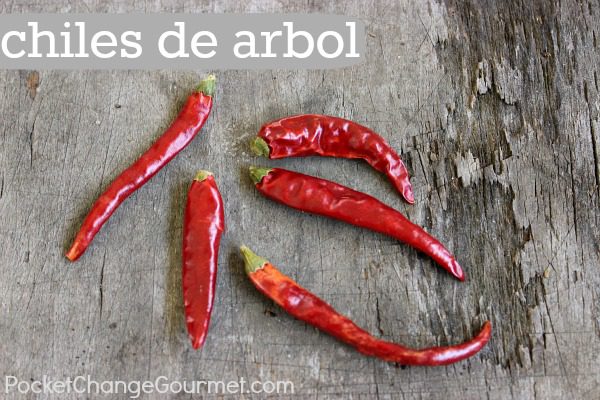
- heat index 15,000-30,000 Scoville units
- Primarily used in powdered form to make sauces, but can also be used in soups and stews.
Chile de Arbol is also known as either bird’s beak chile or rat’s tail chile. They are a very distinctive bright red color when mature, even though they are a fresh green before that.
Moreover, one of these peppers’ main benefits is their versatility. They can be found either dried fresh or powdered and are often used to decorate wreaths because they do not lose their red color after they are dried. Not only is this pepper terrific as chili powder or in hot sauces, but it is also skinny and tiny enough to flavor foods, olive oil, and beverages as a whole dried pod. You can substitute Cayenne pepper, its more popular cousin, with Chile de Arbol in most recipes.
2. Jalapeno – The Most Popular Mexican Peppers
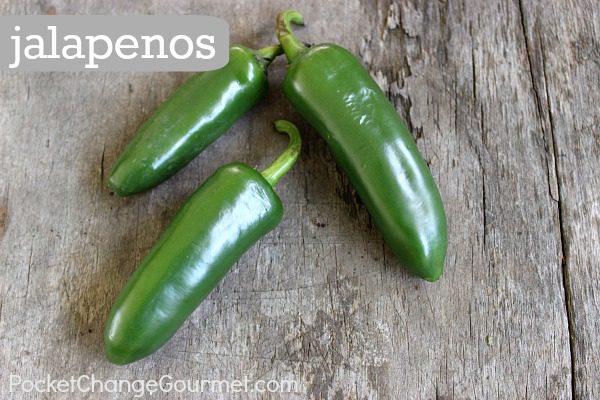
- heat index 2,500–10,000 Scoville Units
- It is the most widely used chile pepper.
Jalapeno is a medium-sized chili pepper, which is 2–3½ inches long at maturity and is commonly picked and consumed while still green. They occasionally allow ripening fully and turn a beautiful crimson red. After harvest, they store Jalapenos at 45°F, they have a shelf life of up to 3-5 weeks. Moreover, nutritionally speaking, jalapenos are one of the best sources of vitamin C.
They are also one of the most, if not the most common, chiles in the United States. Not to mention they were the first peppers that traveled into space on a NASA shuttle. So, they love and are popular enough.
3. Cascabels Mexican Peppers
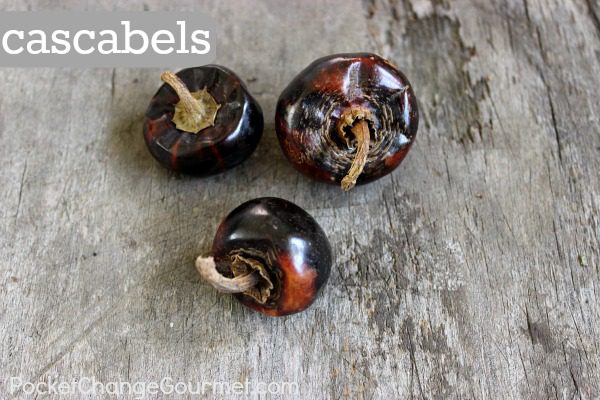
- heat index 1,000-3,000 Scoville units
- Cascabel is perfect for adding a touch of heat to soups, salsas, stews, and sauces.
Cascabel chile, also known as the rattle chili, is a Mirasol variety and gets its name from the tendency of loose seeds to rattle inside a dried cascabel when shaken. The Cascabel is a plump, round, smooth, and small chile that ripens from green to red. When dried, the color darkens to a deep reddish-brown with almost transparent but thick skin.
4. Habanero Mexican Peppers

- heat index 100,000–350,000 Scoville units
- They are often the main ingredients in bottled hot sauces.
Unripe habaneros are green, and they color as they mature. Common colors are orange and red, but white, brown, and pink are also seen. Mexican cuisine commonly uses this chile because it is the hottest, so be careful when preparing them.
There are also at least eighteen varieties of Habanero Peppers, and new types are being grown. Here are only a few of them, the most popular ones:
- Red Habanero
- Orange Habanero
- Caribbean Red
- Habanero Condor’s Beak
- Hot Paper Lantern
- Red Savina
- Datil Peppers
- Peach Habanero
5. Poblano Mexican Peppers
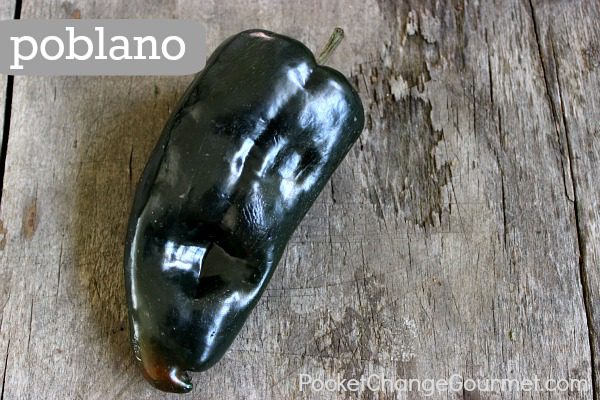
- heat index 1,000-2,000 Scoville units
- They commonly use it in mole sauces.
The poblano is mild chili pepper. So dried, they call it chile ancho. The ripened red poblano is significantly hotter and more flavorful than the less ripe, green poblano. The flavor and heat can be unpredictable; also, occasionally, they can have significant heat.
Moreover, Poblanos are particularly rich in vitamins A and C. These two nutrients act as antioxidants in your body and help fight underlying damage from free radicals, which may lead to disease
6. Pasilla Mexican Peppers
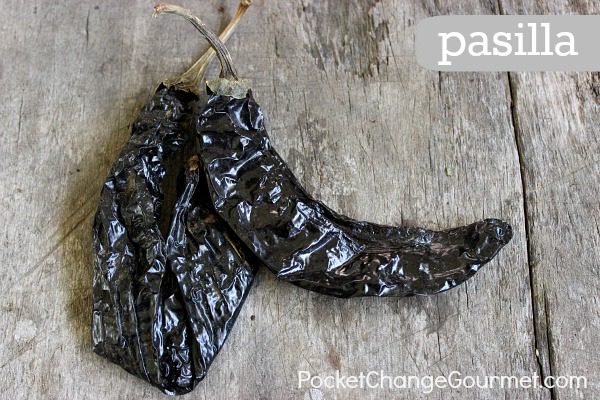
- heat index 250-4,000 Scoville units
- It mixes great with fruits, duck, seafood, lamb, mushrooms, garlic, fennel, honey, or oregano.
Pasilla or “little raisin” refers to the dried chilaca pepper. Keep in mind that many times grocers miss label these for Ancho chiles. The Pasilla chile is normally 8 -10 inches long and narrower than Ancho. Also, they named it for its dark, wrinkled skin, and it is a mild to hot, rich-flavored chile.
Featuring a rich smoky taste and earthy flavor, the pasilla often turns up in whole dried form or as a powder in Mexican salsas as well as in mole sauces and adobo sauces. Also, the Mexican pepper can even create an interesting twist in the flavor and appearance of the standard red chili enchilada sauce.
7. Anaheim Mexican Peppers
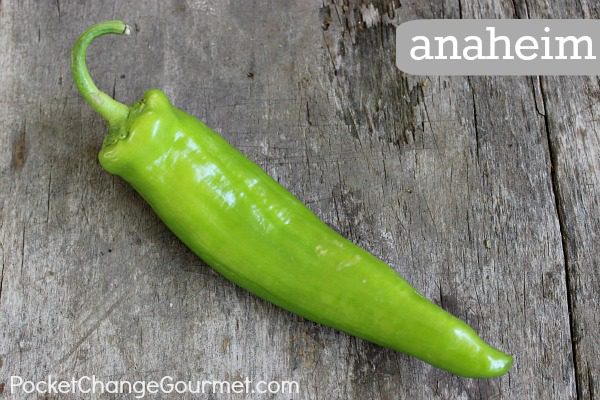
- heat index 500-2,500 Scoville units
- The Mexican pepper is commonly used in salsas and can be roasted and stuffed to make Rellenos.
The mildest variety of chili pepper, also called California chili, because of its origin, or Magdalena. Since Anaheim peppers originated from New Mexico, they call them as New Mexico peppers. It would help if you kept in mind that some varieties of the pepper grown in New Mexico tend to be hotter than those grown in California.
In addition, Anaheim peppers are a mild variety of chile pepper typically used in Mexican and Southwestern cooking. Mainstays of American-Mexican cuisine, canned green chiles are made from Anaheim peppers and provide a nice flavor and added heat.
8. Morita Mexican Peppers
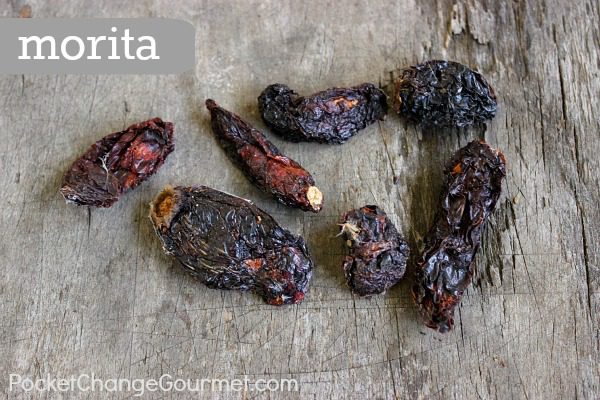
- heat index 2,500-8,000 Scoville units
- The mexican pepper has a rich slightly fruity flavor.
Morita is a smoke-dried jalapeno, commonly referred to as a chipotle. The main difference is that they smoke Moritas for less time, leaving them softer and retaining their slightly fruity flavor. These dried chile peppers are approximately three to five centimeters long and have soft, shiny skin, which ranges from dark red to brown. The mild smoking process exposes them to maintain their subtle fruity characteristic while enhancing a rich tobacco and chocolaty aroma.
9. Guajillo Mexican Peppers

- heat index 2,500-5,000 Scoville units
- They commonly use it in pastes, butter, or rubs to flavor all kinds of meats, especially chicken.
The Guajillo chili is characterized by its thin, deep, red flesh. It also has a mild green tea flavor with berry overtones, and its amount of heat is moderately small. They sometimes use it to make salsa for a sweet taste with a surprisingly hot finish.
Moreover, like the Ancho, the Guajillo is one of the holy trinity of chilies that are commonly used in authentic Mexican mole sauce recipes. Its unique sweetness, too, makes it a fun chili to experiment with around the kitchen.
10. Ancho Mexican Peppers
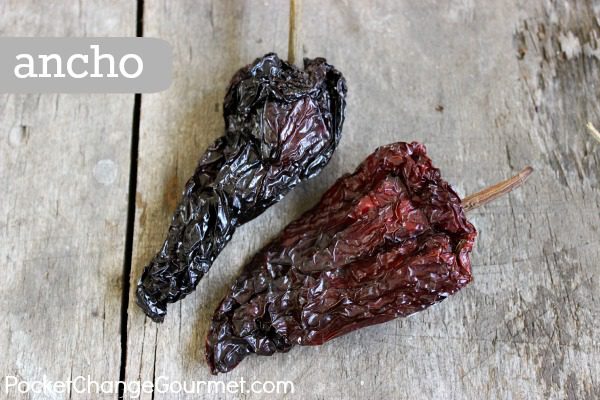
- heat index 1,000-2,000 Scoville units
- Ancho, along with Pasilla and Guajillo, makes up the “holy trinity” widely used in mole sauces.
Ancho is the dried form of Poblano chiles and the most widely available dried chiles. Different peppers from the same plant have been reported to vary substantially in heat intensity. However, ancho chile pepper is the dried, ground fruit of Capsicum annum. They made Mexican peppers from poblano chile peppers grown in Mexico.
Do not forget that Ancho has a mild paprika flavor, with sweet to moderate heat, so it became one of the most favorite pepper of them all.
11. Puya Mexican Peppers
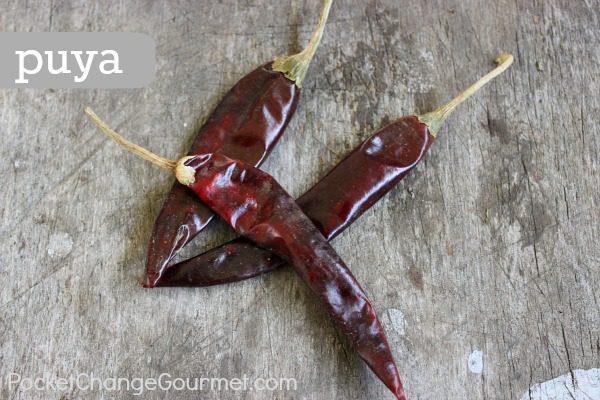
- heat index 5,000-8,000 Scoville units
- A Mexican pepper that is great pureed, mashed, or diced, and then made into a spicy sauce.
It is very similar to the Guajillo but smaller and hotter, and it may be soaked in water to pull out the flavor. They often used Puya pepper more for its fruity flavor rather than its flesh, which means it is great pureed, mashed, or diced and then made into a sauce.
Even though these peppers are most commonly used for preparing the best chili dip, they can also be used for seasoning soups and stews, breakfasts and dinners, and anything in between.
12. Serrano Mexican Peppers
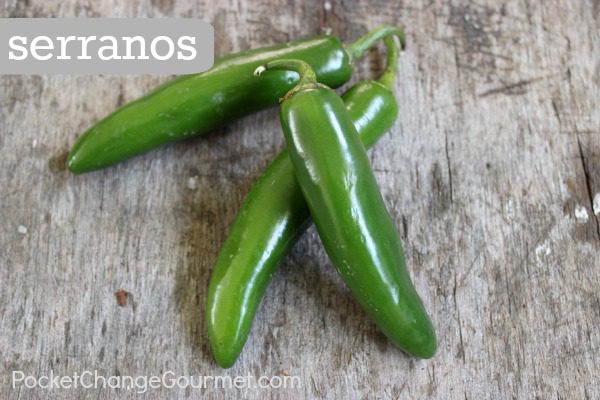
- heat index 5,000-25,000 Scoville units
- It remains perfect for salsas, sauces, relishes, and garnishes.
This is a smaller version of the jalapeno, similar in color, and matures from a dark green to reddish-orange, even yellow. It is a very meaty flesh pepper and is not suitable for drying. However, people typically eat these peppers raw, but we agreed that they are best when roasted. Not to forget that serrano peppers are also commonly used in making pico de gallo.
What Is Your Favorite Mexican Pepper?
Finally, it is your turn to share your best and also worst experiences with Mexican hot peppers in the comment section. It can be a delightful and interesting adventure when cooking with hot peppers, but the risks are also pretty high.
However, this article has the purpose of teaching you some basics about the twelve most popular hot peppers from the Mexican kitchen, but the more you learn about the topic, the easier it would be for you to try and experiment. Once you have done your research about the ingredients you want to use, you are ready to put your own mark on your dish. People will delight when they see how that comes out!
Chiles de Arbol:
The name Chile de árbol, which refers to the long, woodsy stem of the pepper, means “tree chili” in Spanish. Other names for it include rat’s tail chile. Dried Arbol chiles have a smokey, nutty, and faintly grassy flavor. Again, roasting the peppers brings out all of these base flavor qualities.
Health Facts:
- Arbol chiles are packed with health advantages despite their modest size. They are rich in vitamin C and vitamin A, both of which are necessary for the health of the skin and eyes.
- Chiles de árbol is a spicy approach to building stronger bones because they also include minerals like calcium and iron.
- Arbol chilies have a particular substance called capsaicin, which aids in reducing blood pressure and treating inflammation in addition to all these other health advantages.
Jalapeno – The Most Popular Mexican Pepper:
It’s difficult to taste food without spice. Pepper and other spices improve the flavor and taste of meals. The Mexican jalapeño pepper is one of the most well-liked peppers in the world. The jalapeno pepper will become red if you keep it on the plant long enough. Although red jalapeño is tasty and slightly sweeter than the green type.
Health Facts:
- Jalapenos and other hot chili peppers can also help you lose weight or stabilization.
- The component in chili peppers that gives them their heat, capsaicin, is thermogenic. Thermogenics encourage the body to burn fat by speeding up the adipose tissue’s metabolism and creating heat.
Cascabels:
They widely use it in Mexican cuisine and is less well-known and less utilized outside of Mexico. Cascabels give foods that use them a delicious and unique flavor. The flavor of the cascabel chili is pleasantly nutty, rustic, and a little Smokey.
Health Facts:
- Cascabel chilies have a low-calorie count, a lot of fiber, and large amounts of iron, magnesium, and potassium, and are rich In vitamin c
- Capsaicin, the substance that gives some peppers their heat, is also present in dried peppers like the chili cascabel.
- One of the more surprising benefits of chilies is a rise in metabolic rate,
Habanero:
The habanero pepper has a delicious, citrusy flavor and is hot chili pepper. Due to its high degree of heat, they use it to make hot sauces, and spicy salsas, and to add heat and flavor to a variety of foods. The pepper pods are about 1-2 inches broad and are quite tiny. The habanero plants, begin green and eventually turn a brilliant orange or scarlet, depending on the variety.
Health Facts:
- The capsaicin in habaneros is helpful in reducing cholesterol levels in young, females.
- The capsaicin in habaneros is beneficial for lowering blood pressure. The increase of the insulin-like growth factor IGF-I lowers blood pressure.
- All over the body, capsaicin stimulates thermo genesis. The mechanism responsible for raising and reducing body temperature is known as thermogenesis, and by boosting it, metabolism is quickened.
Poblano:
They are quite huge, mild peppers that resemble a heart. They are ideal for stuffing because of their thick skins and walls, which will hold up well in the oven. When trying to cook used roasted and peeled or dried chilies. They call it ancho chilies when dried.
Health Facts:
- The different nutrients present in poblano peppers are well known it is usefulness in the prevention of cancer.
- It has an extremely low-calorie count per serving and is suitable as part of a weight loss regimen.
Pasilla:
The dried chilaca pepper, a well-known Mexican chili pepper, is the originator of pasilla (chile pasilla), meaning “small raisin.” They start out dark green and turn dark brown as they mature. The pasilla, which has a rich, Smokey flavor with an earthy undertone, is commonly used in dried whole or powdered form in Mexican salsas, mole sauces, and adobo sauces. Even the traditional red chili enchilada sauce’s flavor and look can be interestingly altered by the pasilla.
Health Effects:
- It has vitamin C, which is known as a valuable bioactive phytochemical that supports the immune system. The immune system may be boosted, damaged tissues may be repaired, and the risk of oxidative stress may be decreased.
- It might contain capsaicin. People understood it to possibly improve diabetes and obesity.
- The decreased glucose levels with type 1 diabetes.
Anaheim:
The Anaheim pepper, which can reach a length of 6 to 10 inches, is medium-sized, mild chili pepper. Although it can be used in red, it is utilized generally for cooking. Other strains mature to a full red color, as compared to the typical variety’s dark green/reddish appearance. They are among the most popular chili peppers grown in the US and are used in a variety of dishes. Ristras made of red variety can be dried and strung together.
Health Effects:
- The main components of an anaheim pepper are water and a minor amount of carbohydrates, hence it has extremely few calories.
- Since capsaicin is present, it has been proven that it can stabilize insulin release, low-density lipoprotein, and pulse rate.
Morita:
This hot, Smokey chili pepper makes all kinds of traditional meals because it is packed with flavor. The key distinction is that Morita peppers are smoked for a shorter period of time, leaving them softer and with a more subdued flavor. They have incredibly complex flavors. In foods like soups, stews, salsas, marinades, and even desserts, it gives a really appealing taste.
Health Effects:
- Morita chilies provide a surprising number of health advantages in addition to enhancing taste.
- Morita chiles are rich in magnesium, vitamin C, vitamin A, and B vitamins (such as thiamine and niacin).
- The presence of the chemical capsaicin in chile peppers is what gives them their intense heat. It has been proved that capsaicin is highly helpful in boosting metabolism, achieving a healthy weight, and even regulating blood sugar levels.
Guajillo:
Mexican cooking utilizes this popular guajillo pepper. It is the dried variety of the Mirasol chili pepper, second in popularity only to the ancho, and it has a mild to medium heat and a sweet flavor.
Health Effects:
- Include chiles in a regular, well-balanced diet. if you believe it strengthens your immune system.
- Your body receives roughly 7% iron and 5% potassium from it.
- A pepper has virtually the entire per day dose of vitamin A, which also protects many other body parts from oxidative stress-related damage.
Ancho:
It’s green because it’s a fresh chile that was picked before it ripened. A poblano, however, turns red as it ripens and gains more sweetness, which combats its mild heat. As a result, a poblano is green and an ancho chile is red. The peppers are renowned for their intense smokey flavor, mild paprika flavor, and sweet to moderate heat.
Health Effects:
- Chili pepper spice can be used to substitute fatty foods as a wise and healthy weight loss strategy, along with regular exercise.
- Moreover, it possesses anti-inflammatory qualities that have been demonstrated to support heart health.
Puya:
People commonly utilize Puya chilies dry, therefore they harvest it at a late stage of development. This causes the chili to turn from a deep crimson red to a nearly purple hue. The dried puya is three to four inches in length and is flat with a slight curvature. In fact, they resemble guajillos in appearance.
Health Effects:
- Fights inflammation.
- Natural Pain Relief.
- Healthy Heart Benefits.
Serrano:
Serrano peppers are fiery chili peppers that got their name from the Mexican mountain slopes where they first grew. Locals consider it fruits and are the second most popular ingredient in Mexican food after the jalapeño pepper. The little peppers are widely used in Southeast Asian cooking; giving everything they touch a hot flavor. People consume them raw in sauces and dips, pickled, or cooked, and have a hot and sour flavor.
Health Effects:
- Clears Congestion.
- Boosts Immunity.
- Can help prevent Prostate Cancer.
- Can help prevent Stomach Ulcers.
Storage:
The chili can be kept for up to 2-3 months in an airtight container out of direct sunlight. If the chili is allowed to totally dry, it will quickly split and won’t soak in the water when it is reassembled; keeping the air out helps the chili maintain its crispy and crunchy feel. The most efficient method is to freeze extra chilies and then thoroughly rehydrate them when it is time to cook if there are greater quantities and not enough time to use them then freeze them for 2 months.
Nutrition Information
Per serving:
| Calories | 313.5 kcal | Carbohydrates | 41.5 g |
| Potassium | 596.1 mg | Fat | 5.1 g |
| Saturated Fat | 1.3 g | Cholesterol | 40.0 mg |
| Sugar | 5.7 g | Fiber | 10.7 g |
| Sodium | 1,082.1 mg | Protein | 21.9 g |
Check out some Mexican recipes that you will surely love. Mexican Cilantro Lime Vinaigrette, Mexican Skillet, and Mexican Macaroni Cheese.

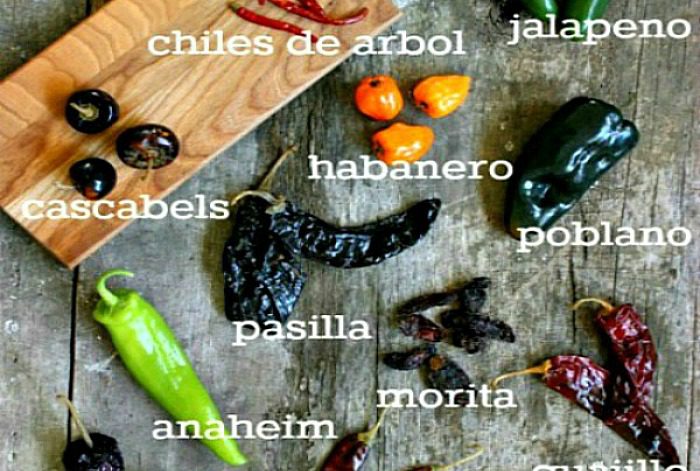


13 Comments
What a great lesson on peppers! I get confused on which are mild and not hot, so this is fantastic for me! Will print and keep handy for shopping. Thanks for sharing.
And whatever you do, don’t pick your nose after chopping upsome serrano chilies. Whew!
Hi!! Iv’ made chili like many others with powder but would like to try dried chili’s. I know how to make basic chili paste in a blender. I would like to know which chili’s would be best in chili(the kind with beans) and about how many I would need to use to make 2-3gal. of chili?
Thanks for Your Time!!!
Tom
What’s the best mild pepper for cooking…I’m looking for something that will soften up quickly when I add it to a pot of beans. I’ve tried Anaheim, but they take forever (days) to soften. Jalapenos take a while but have a very good taste when they finally get soft. So far Poblano is the quickest to soften, but still takes a while. Is there a pepper, with a good cooked taste, that meets my need?
John
Hey John – There are two peppers that I would recommend you give a try. The mildest one would be banana peppers, but it may not solve your issue with it cooking down and softening to your taste. So my choice is pepperoncini peppers. They will soften faster than any pepper and shouldn’t overpower the other ingredients in the recipe.
Doug, thanks for the ideas. I happen to have a banana pepper growing (no fruit yet) and a languishing pack of pepperoncini seeds which will now get some extra attention.
John
I use New Mexican 64 chiles in my pinto bean recipe. You can use Anaheim’s or other peppers of that type. Just roast and peel off the skin and they’ll soften up just fine.
We grow several acres of chilies for restaurants and stores.I am expanding that acreage substantially in 2016. The info you provide, along with many other sources has been instrumental in our success.
Our best return per acre has been with the mild to medium hots. And there are NO CHEMICALS used at all.
Thank you much.
Hello, I was wondering if you could help me. I’m a chilli enthusiast and in particular, Mexican chillies and their uses. I’ve recently come across some recipes calling for the ‘Puya’ chile but they don’t seem to be available here in the UK. I grow around 30 different types of chilli at home and would preferably see if I can grow some at home or would like to buy some fresh or dried Puya chillies. Please can you help me?
Hi Justin,
You can substitute “Guajillo” chiles in your recipes that call for “Puya”. They are very similar, the “Guajillo” is slightly milder. Here is a supplier of dried “Guajillo“.
I enjoyed reading about these peppers. I am going to grow them in my garden. I’m also learning how to prepare Mexican Dishes, so that I can get to know my Mexican Brother’s and Sisters.
Daniel Williams
Ok im looking for Chile Colorado, whichwould that be? A little confusing.